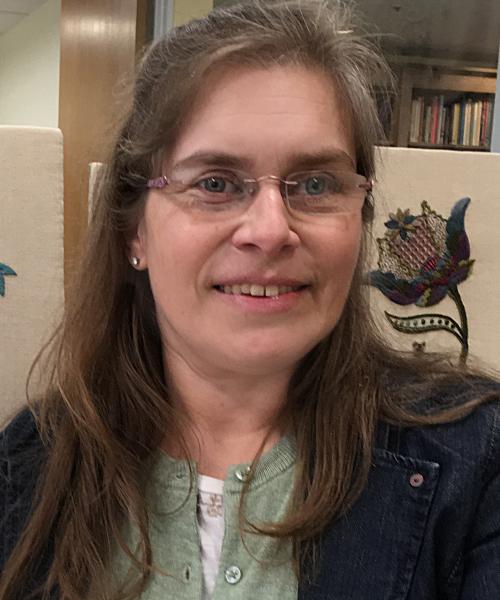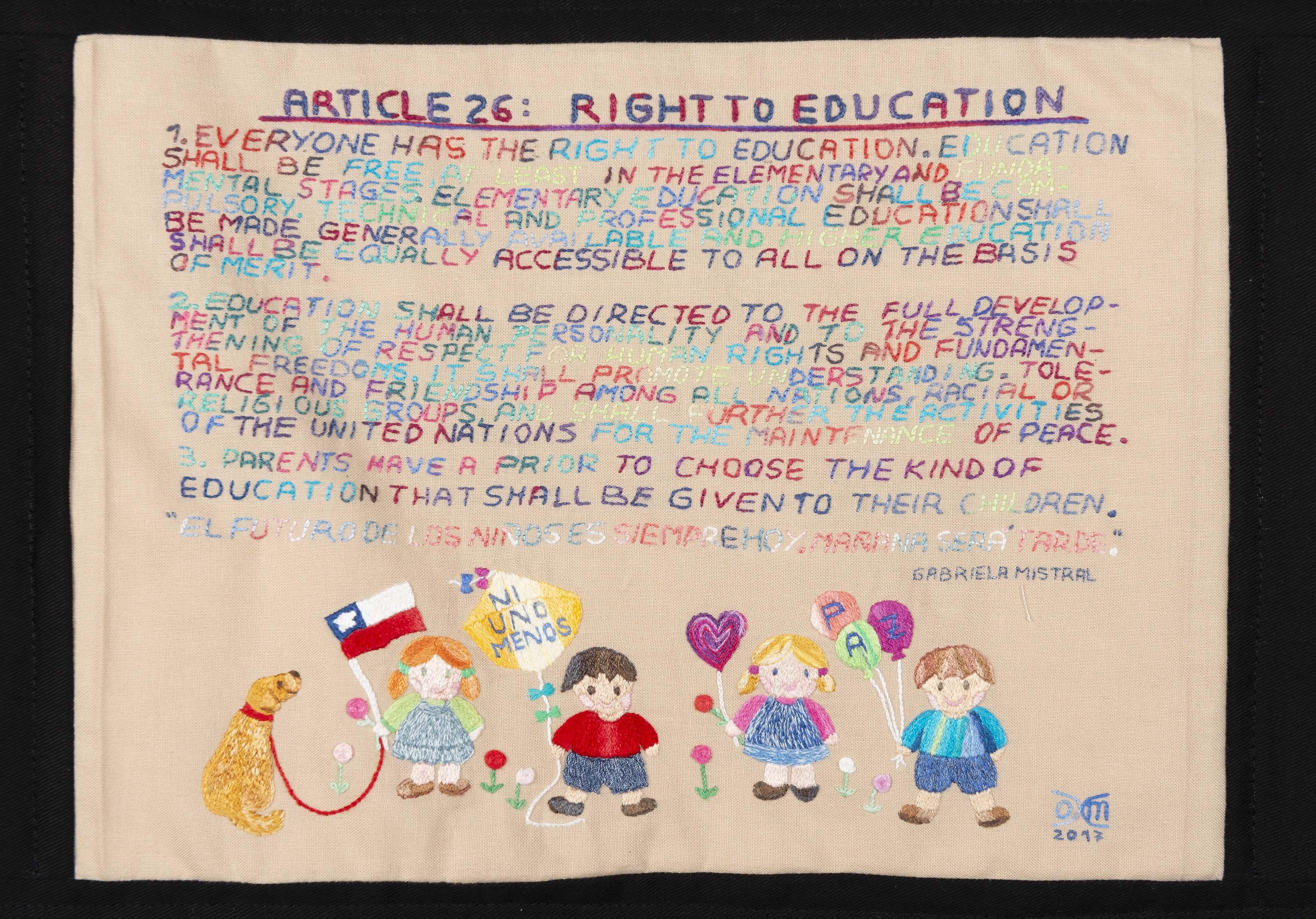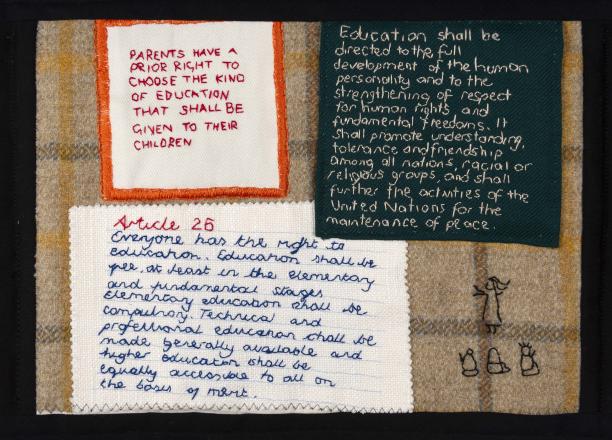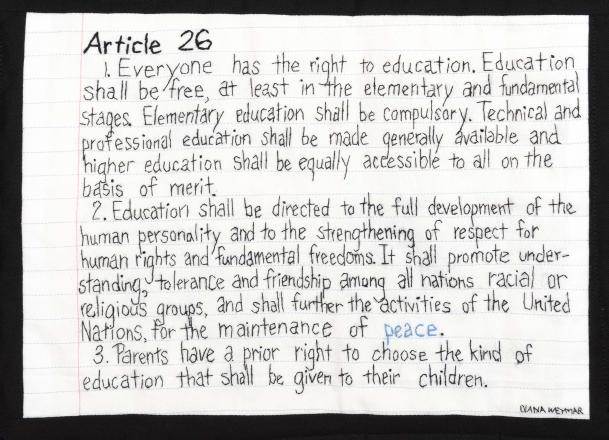Article 26
Everyone has the right to education. Education shall be free, at least in the elementary and fundamental stages. Elementary education shall be compulsory. Technical and professional education shall be made generally available and higher education shall be equally accessible to all on the basis of merit. Education shall be directed to the full development of the human personality and to the strengthening of respect for human rights and fundamental freedoms. It shall promote understanding, tolerance and friendship among all nations, racial or religious groups, and shall further the activities of the United Nations for the maintenance of peace. Parents have a prior right to choose the kind of education that shall be given to their children.
Ximena Ortiz-Medina
About my work
I like to embroider every day and everywhere to spread blessings, happiness and love. A little kindness can help people have a better life.
This project was inspired by my experiences studying and teaching chemistry, and working with young people in Valparaíso, Chile; and my admiration for Nobel Prize-winner Gabriela Mistral, who was a Chilean poet, diplomat, humanist and teacher. She loved children and fought for women teachers’ rights. Her phrase ‘El futuro de los niños es siempre hoy, mañana será tarde’ means ‘The future of children is always today, tomorrow will be too late’.
I also wanted to express my values about respecting children’s lives from conception; avoiding abortion and considering adoption. The phrase ‘Ni uno menos’ (‘Nothing less’) is about children’s right to live without discrimination.
I used principally primary colours to represent the happy experiences children must have during their education. For me, colour is more important than a lot of different stitches.
- Ximena Ortiz-Medina

About me
Ximena Ortiz-Medina is a needleworker who started embroidering when she was eight years old in Viña del Mar, Chile.
During her time in elementary school, she developed her fine and neat embroidery style. Since then, she is self-taught in different embroidery techniques, like crewel, needle-painting, stumpwork and cross-stitch. Other needlecrafts she makes are crocheting, sewing, knitting and painting.
Ximena participates regularly in exhibitions organised by San Francisco School of Needlework and Design in San Francisco, California.
Before moving to the United States, she studied and taught chemistry at Frederico Santa María Technical University in Valparaíso, Chile, where she developed a passion for teaching.
Ximena lives in Los Angeles, California, with her husband.



